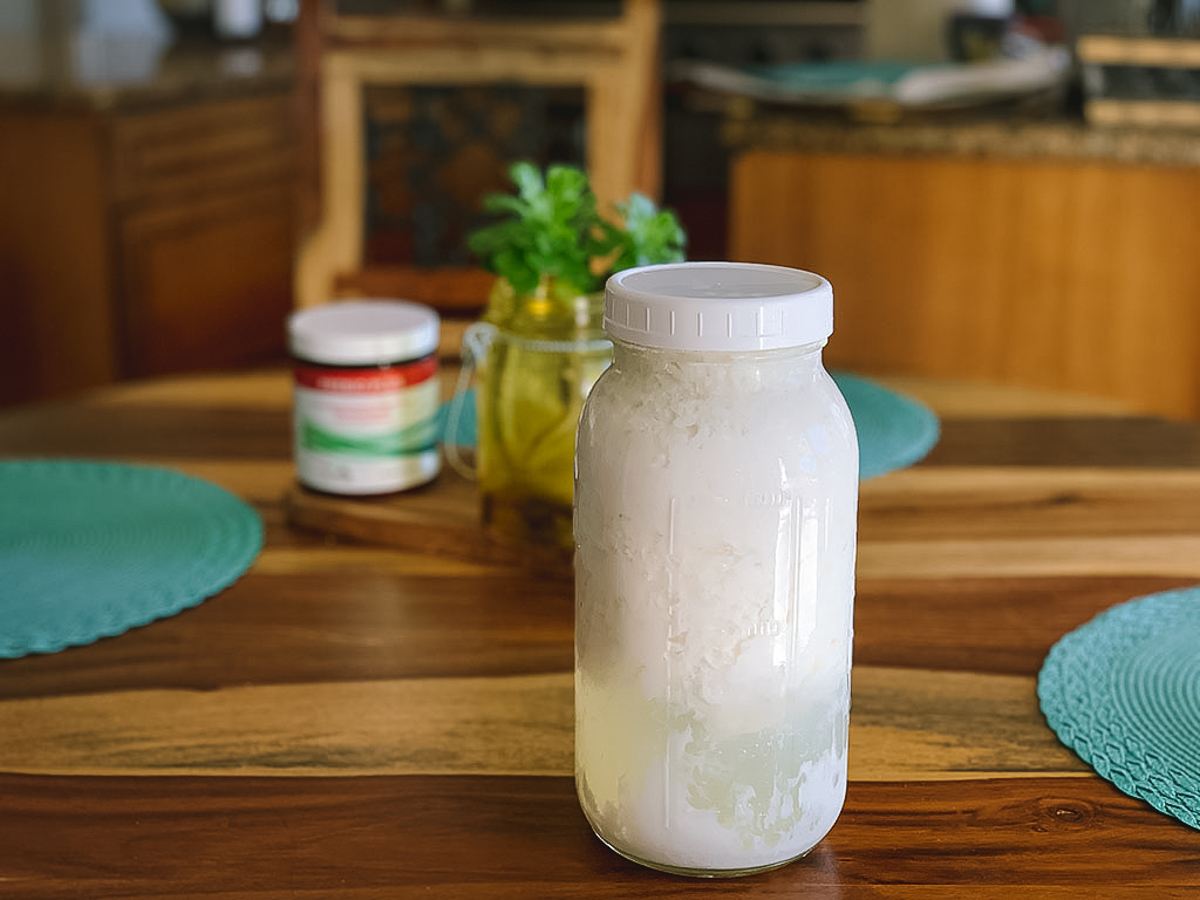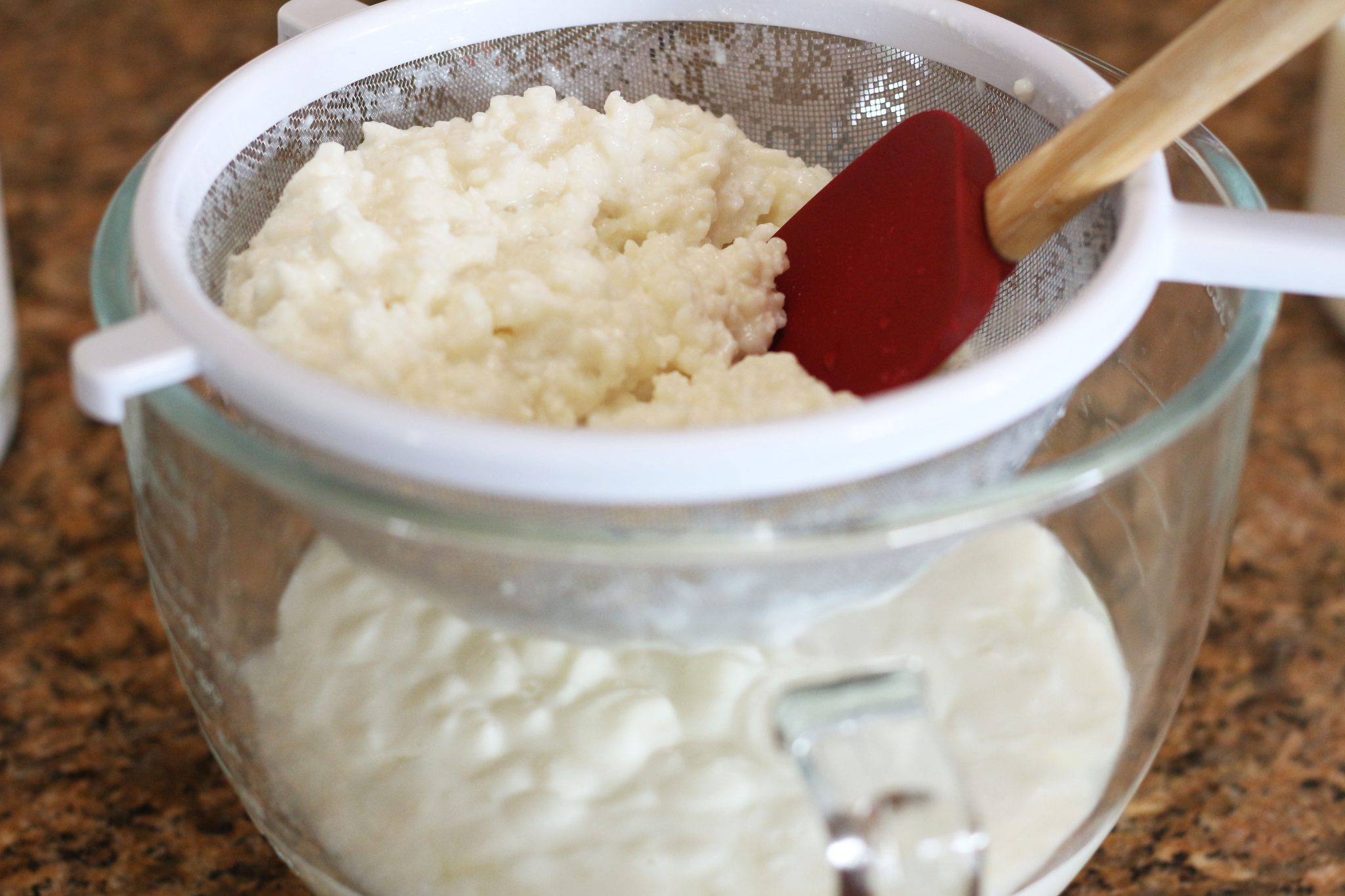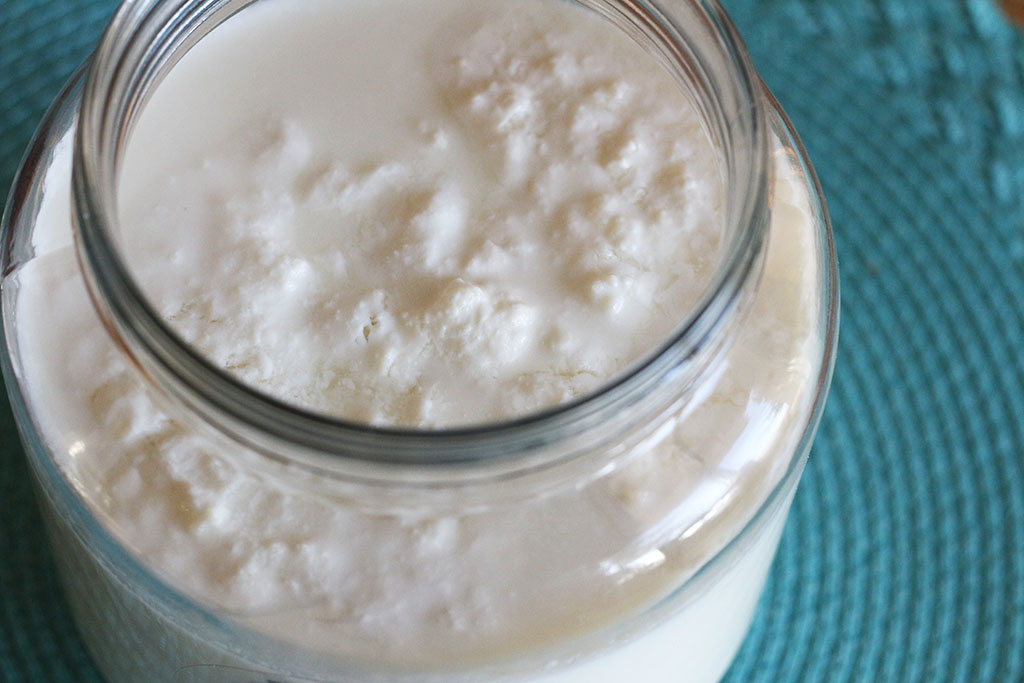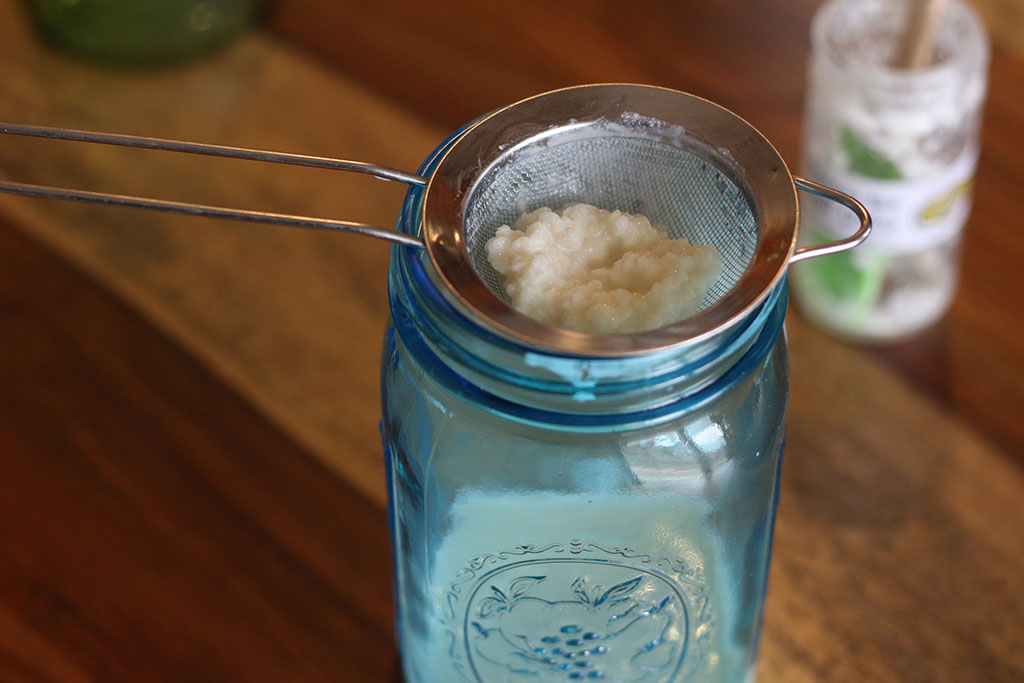
The Thick and Thin of Kefir
I have had my kefir grains for over twenty-three years and have made kefir every day since. Let me tell you - these kefir grains have a mind of their own. When I make kefir, my kefir grains will start to float to the top of the jar like they have a life jacket on. They make kefir extremely well and multiply like crazy, and they demand that I pay attention to them. If I get too many in a jar and don't add enough milk, when I open my jar they will spit and bubble at me as if to say, "Add more milk please!" My grains are intense, and I like them that way. They have over 50 strains of good bacteria, and I don't know of any other food that can give you so many good bacteria in such a small amount of food. Kefir grains will last forever if you take care of them.
Why is My Kefir Not Getting Thick?
I get more emails about kefir separating into whey and curds than any other question about cultured foods. It can happen because the grains are growing or the temperatures have gotten warmer or a few other things. It's not a bad thing and the kefir is still good, so don't throw it out and think it's no longer good. Kefir grains are extremely active and strong. They will multiply quickly and before you know it, the grains will need more milk. They'll start fermenting so fast you will think that your kefir is not done because it's thin, when actually the opposite is happening. If the grains have increased and you have not added enough milk, they will ferment the milk faster and you might not notice that the kefir is ready and thick. Then as it sits longer, the kefir will start to separate into whey and curds. It can create quite a panic for people and they fear they have done something wrong. Many will throw this over-fermented kefir out. Don't do that, it's still good! First, let me say it is never ruined, it is just really fermented and sour. One of two things has happened
Your Kefir is Probably Over-Fermented
- 🥛 You may have too many grains for the amount of milk you are using and need to add more milk or remove some of the grains.
- ☀️ Your house is warmer, and it is fermenting faster. Again, you will need to add more milk. If you see clear yellowish liquid and curds, it is over-fermented and has passed the thickening stage. It is now separating into whey and curds. Again, this is not bad - it's just a little more sour and may be less appealing.
Don't give up if it's over fermented - there are lots of things you can do. Check out the video and more tips below!
Kefir Time-Lapse Video
Kefir Tips


What You Can Do If Your Kefir is Over Fermented
You can separate the grains from the kefir and then mix up the kefir by stirring or shaking the jar. You can then drink it, make a smoothie, or store it in the fridge.
If it is overly sour, add some fresh or frozen fruit and let it sit on your counter for a couple of hours. The bacteria will eat some of the sugar in your fruit, making the kefir taste milder and increasing the nutrients.
- Instead of making your regular recipe with a large amount of kefir, split it up. For instance, instead of using a cup of kefir for a recipe, only use half of a cup. Then, use regular milk or coconut milk and blend it together. It's a lot less sour this way.
- Add more milk to your super sour kefir and let it ferment again on the counter for 4 to 6 hours. This will help to lessen the sharp twang. You don't need to add kefir grains. It will work without them because the kefir is so strong.
- Here is another great tip: give your kefir a prebiotic like Prebio Plus. Prebiotics are food for bacteria, and they give your kefir something to eat, which will help make your kefir creamy again. After the grains are removed give it a pinch of Prebio Plus per quart (you can get it here) shake it up, place it in the fridge, and let it do its thing. In the morning, it will be creamy again!
For more info, you can look at my tips in these articles.


How to Strain Kefir That Is Really Thick
- Pour your kefir into a strainer that has been placed over a bowl.
- Stir the kefir with a rubber spatula or rubber spoon, and stir quite vigorously until it starts to drain out of the strainer. This can take a little while but keep stirring. You won’t hurt the grains by doing this. Sometimes you have to stir quite a bit before the kefir will start flowing out of the strainer.
- You can also use some of the whey that drains into the bottom of the bowl. Using a big spoon to remove some of the whey in the bottom of the bowl, pour it back over the kefir that’s in the strainer. Stir with a rubber spatula until all the kefir has strained into the bottom of the bowl.
- I usually just keep stirring till it all falls through the strainer. It can be a workout when you have a lot of grains, but that’s a good thing!
Store your kefir in the fridge or second ferment it. Remember to give your grains some fresh milk so you can ferment (or store) it again.
Check out this video for more tips on how to strain kefir. 🎥


How to Tell If It’s Working
If your kefir looks like milk, it is not separating into whey and curds, and does not taste sour then one of these things is happening:
- Something is wrong with your grains.
- You added too much milk for the number of grains in your jar
- Your house is colder and it needs to ferment longer.
The big test is the taste test. If it is getting tart and sour, your kefir is working. It should also thicken, but you will need to watch it to make sure it doesn’t over ferment. Always use cold milk straight from the fridge and don’t use a heating pad unless your house is really cold (in the mid to lower 60s) all the time. Kefir grains that are strong will make thick, tart kefir and you will love it.
Listen To My Podcast
I get more emails about kefir separating into whey and curds than any other question about cultured foods. It can happen because the grains are growing or the temperatures have gotten warmer or a few other things. It's not a bad thing and the kefir is still good, so don't throw it out and think it's no longer good. Kefir grains are extremely active and strong so check out this podcast to learn to make the best kefir!
Are you on the list?
Sign up today and I'll send you my free Getting Started Guide!
Each week I'll send you updates, tips, recipes, and more! You might even be a winner of my weekly giveaway! (starter cultures, memberships, and more!)
Come be a part of my cultured food family!



